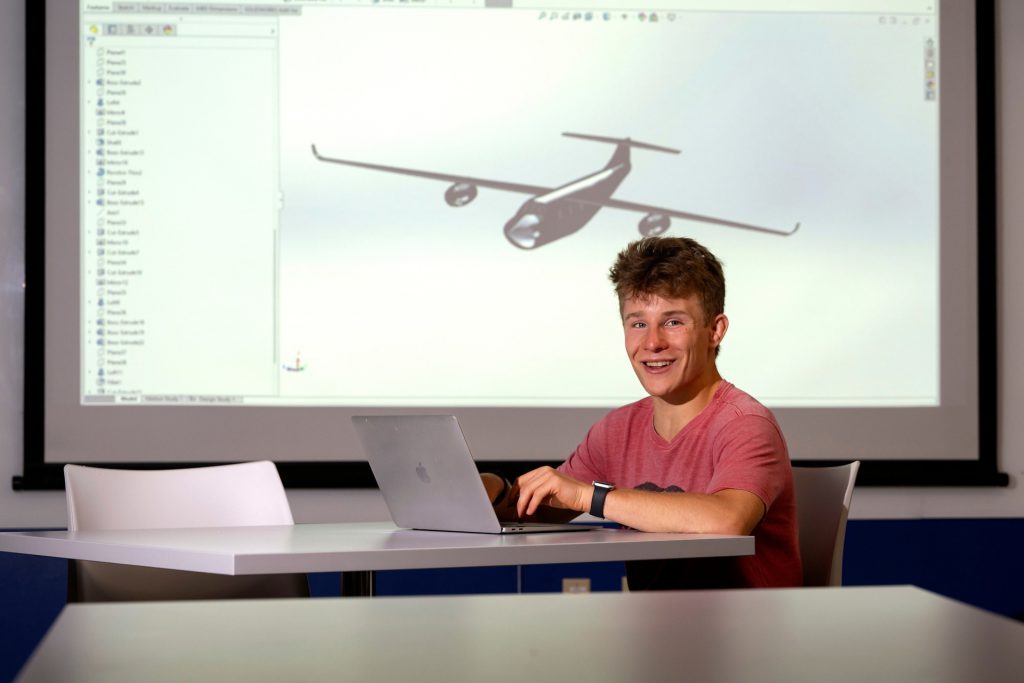Contact:
Mike Ferlazzo
570-577-3212
570-238-6266 (c)
mike.ferlazzo@bucknell.edu
LEWISBURG, Pa. (August 7, 2025) – In any given year, there are over 10 million airline flights through the United States. This summer, Kade Davidheiser ’27, a mechanical engineering and biology double-major from Barto, Pa., dove deep into the data of a single day to investigate what those flights reveal about carbon emissions.
“We took a screenshot that captured a full day of the radar for the National Airspace System,” says Davidheiser. Along with Professor Greg O’Neill, mechanical engineering, they are analyzing the roughly 60,000 flights that occurred on March 24, 2024. The amount of data generated by a single day of air traffic in the United States is so great that the code to process it, which was written by O’Neill, takes around a month to run. “We’re looking at everything from how many passengers are on a flight, how far the plane flew, and the kilowatt-hours used by each flight,” says Davidheiser. “There’s probably 1,000 inputs per plane, so when you multiply that by 60,000 flights, it’s a massive project.”
The goal of the project is to determine whether carbon emissions could be reduced by replacing petrol-based planes with electric aircraft. One of Davidheiser’s main roles involves building airplanes in SolidWorks, a 3D CAD (Computer-Aided Design) software. “I’m given the wing area, the length and the amount of passengers. From there, I have to create a whole plane,” he says. The design process is dynamic, and the shape and size of the aircraft changes based upon both data inputs and outputs. By modeling different types of planes, they can better understand the factors that inform carbon emissions and energy usage.
“We’re writing a research paper that basically shows it’s possible to integrate electric aircraft into the national air fleet,” says Davidheiser, noting that the paper will be published in the American Institute of Aeronautics and Astronautics journal.
-30-
To download full image, right click and select Save image as


